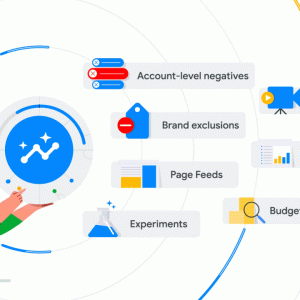
In today’s dynamic marketplace, staying ahead of the curve requires more than just tweaking existing products. True success hinges on mastering the art of product concept development, the very foundation of groundbreaking innovation. This article delves deep into the world of product concepts, equipping you with the knowledge and tools to craft winning ideas that resonate with your target audience.
Understanding the Core: What is a Product Concept?
At its heart, a product concept is a concise description of a potential new product. It’s not just about the physical features or functionalities; it’s about capturing the essence of what this product will be, how it will solve a problem, and why it matters. Think of it as a blueprint, a roadmap guiding the entire product development journey, from initial ideation to market launch.
The Building Blocks of a Compelling Concept:
A strong product concept is a well-constructed edifice built on several key pillars:
- Target Audience: Who are you creating this product for? Understanding their needs, desires, and pain points is crucial for tailoring your concept to their specific context.
- Problem/Need: What problem will your product solve or what need will it fulfill? Clearly define the gap in the market your product aims to address.
- Unique Selling Proposition (USP): What makes your product stand out from the competition? Identify its unique features and benefits that set it apart from existing solutions.
- Value Proposition: How will your product add value to the lives of your target audience? Articulate the tangible and intangible benefits they can expect.
- Differentiation: How will you differentiate your product from similar offerings? Highlight the unique aspects that make it a compelling choice for customers.
- Brand Alignment: Does your product concept resonate with your brand identity and values? Ensure it aligns seamlessly with your overall brand message.
Crafting the Perfect Pitch:
Once your product concept is well-defined, it’s time to communicate it effectively. Think of it as a captivating story that sparks interest and excitement. Here are some tips for crafting a winning pitch:
- Keep it concise and clear: Focus on the key elements of your concept without getting bogged down in unnecessary details.
- Highlight the benefits: Emphasize how your product will make life better for your target audience.
- Use vivid language and storytelling: Paint a picture of the problem your product solves and how it will transform lives.
- Anticipate questions and objections: Be prepared to address concerns and demonstrate the viability of your concept.
From Concept to Reality: The Development Journey
With a compelling product concept in hand, the next step is to embark on the exciting journey of bringing it to life. This involves several crucial stages:
- Market research and validation: Conduct thorough research to understand market demand, competitor analysis, and potential challenges.
- Prototyping and testing: Develop low-fidelity prototypes to gather feedback and refine your concept before investing in full-scale development.
- Building the product: Assemble the necessary resources, talent, and technology to turn your concept into a tangible product.
- Marketing and launch: Develop a strategic marketing plan to create awareness and generate excitement for your product.
- Continuous improvement: Gather feedback after launch and iterate on your product based on user experience and market trends.
Beyond the Basics: Advanced Strategies for Concept Development
While the core principles remain constant, there are several advanced strategies to take your product concept to the next level:
- Trends and future-proofing: Consider emerging trends and technologies, ensuring your product remains relevant and competitive in the long run.
- Sustainability and social impact: Integrate sustainable practices and positive social impact into your concept, resonating with environmentally conscious consumers.
- Emotional connection: Go beyond functionality and tap into the emotional needs and aspirations of your target audience.
- The experience factor: Design your product to offer a unique and memorable user experience, building brand loyalty and advocacy.
Real-World Examples: Concepts in Action
To illustrate the power of a strong product concept, let’s look at some real-world examples:
- Airbnb: Transformed the hospitality industry by tapping into the sharing economy concept, offering unique and affordable accommodation experiences.
- Uber: Revolutionized transportation with a user-friendly app connecting riders and drivers, providing on-demand convenience.
- Tesla: Pioneered the electric vehicle market, challenging traditional car manufacturers and driving innovation in sustainable mobility.
These examples showcase how a well-defined product concept can disrupt established industries and capture the imagination of consumers.
Conclusion: Your Key to Innovation
Mastering the art of product concept development is an invaluable skill for any aspiring entrepreneur, innovator, or marketer. By understanding the core principles, crafting a compelling pitch, and implementing effective development strategies, you can unlock the potential for groundbreaking ideas.










